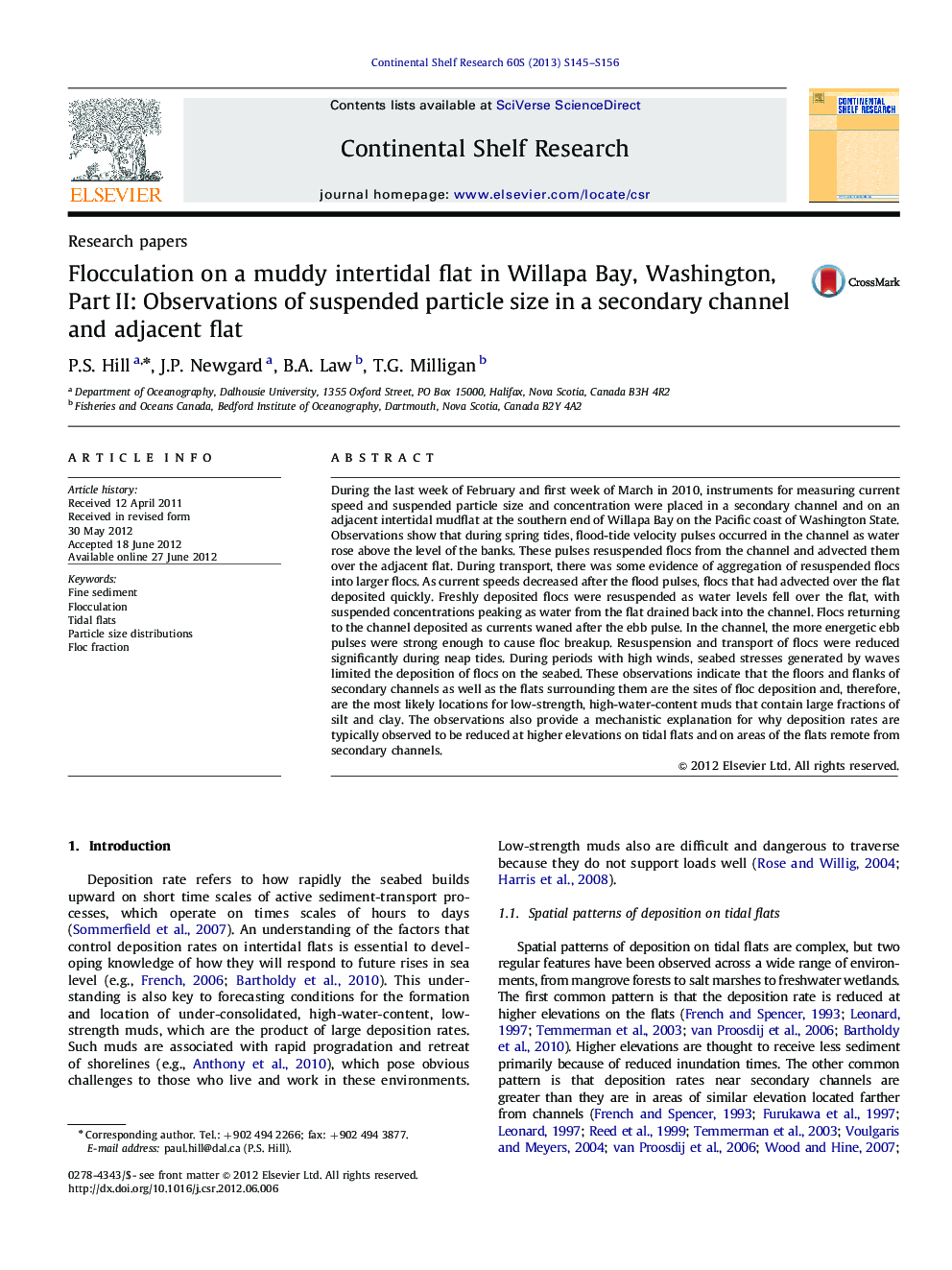| Article ID | Journal | Published Year | Pages | File Type |
|---|---|---|---|---|
| 4532165 | Continental Shelf Research | 2013 | 12 Pages |
During the last week of February and first week of March in 2010, instruments for measuring current speed and suspended particle size and concentration were placed in a secondary channel and on an adjacent intertidal mudflat at the southern end of Willapa Bay on the Pacific coast of Washington State. Observations show that during spring tides, flood-tide velocity pulses occurred in the channel as water rose above the level of the banks. These pulses resuspended flocs from the channel and advected them over the adjacent flat. During transport, there was some evidence of aggregation of resuspended flocs into larger flocs. As current speeds decreased after the flood pulses, flocs that had advected over the flat deposited quickly. Freshly deposited flocs were resuspended as water levels fell over the flat, with suspended concentrations peaking as water from the flat drained back into the channel. Flocs returning to the channel deposited as currents waned after the ebb pulse. In the channel, the more energetic ebb pulses were strong enough to cause floc breakup. Resuspension and transport of flocs were reduced significantly during neap tides. During periods with high winds, seabed stresses generated by waves limited the deposition of flocs on the seabed. These observations indicate that the floors and flanks of secondary channels as well as the flats surrounding them are the sites of floc deposition and, therefore, are the most likely locations for low-strength, high-water-content muds that contain large fractions of silt and clay. The observations also provide a mechanistic explanation for why deposition rates are typically observed to be reduced at higher elevations on tidal flats and on areas of the flats remote from secondary channels.
► Flow velocity and suspended floc concentration and size were measured on a tidal flat. ► Measurements were made in a channel and on an adjacent flat for 2 weeks in winter. ► Flocs are resuspended on flood and ebb tide velocity pulses in the channel. ► Flocs are advected over the flat, where they deposit near the margins of the channel. ► Wind-generated waves limit the amount of deposition that occurs on the flat
